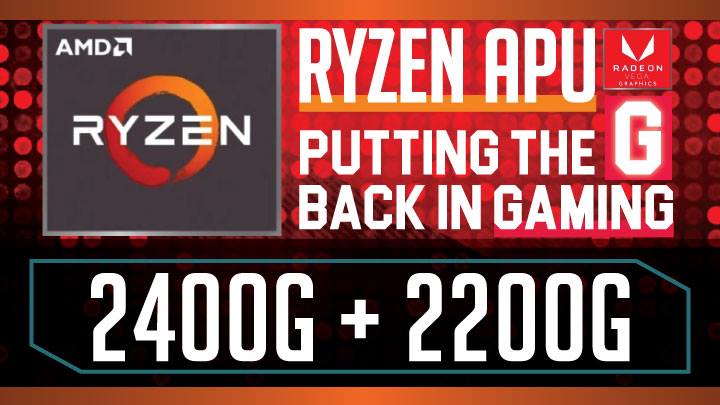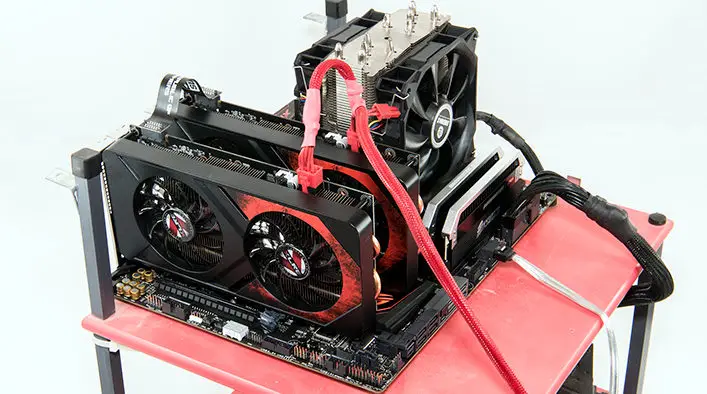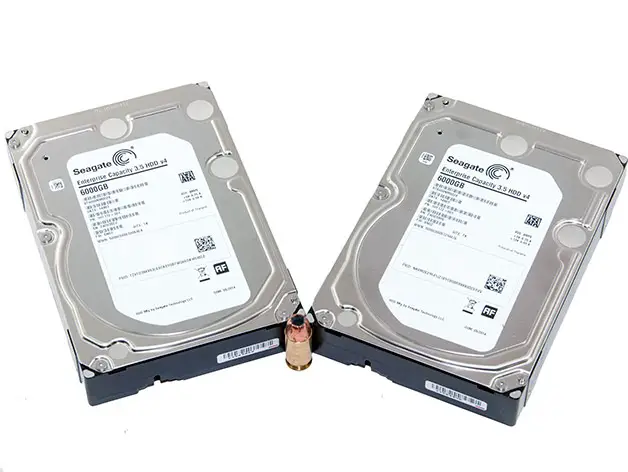Much like previous generations of AMD APU designs, overclocking the new Ryzen based APUs is not as straightforward an affair as their ‘CPU’ brethren. This is not to say that they are overly difficult or particularly finicky to overclcock. Rather it is simply because you can overclock two radically different components but both are cooled by the same heatsink and limited by overall temperatures. Basically, heat and thermal limiting is going to be the largest obstacle in your endeavors to increase the performance of both the Ryzen 5 2400G and Ryzen 3 2200G models. In this regards you can consider the included stock cooling solution ‘good enough for stock’ levels but we would be very hesitant to recommend it if you plan on doing anything beyond the mildest of overclocking. Due to its ‘smaller’ Vega 8 and lack of SMT on the four Ryzen processing cores the cheaper Ryzen 3 2200G will have a bit more headroom, but honestly the included Wraith Stealth is going to hold you back. For this reason we have opted for a Wraith MAX CPU cooling solution. It may not be as efficient as an expensive Noctua branded CPU cooling solution it should provide readers with a good idea of what can be done without spending a fortune on say a dual bay AIO – which will set you back more than what either of these APU will cost.

The other minor issue is that as these new APUs are so new to the market motherboard manufacture’s BIOS division really has not caught up. Yes, nearly every AM4 socketed motherboard will now support them after a simple BIOS flash… but there is ‘support’ and there is optimal support. If you are an experienced overclocker you most likely will be disappointed with what can be done via the BIOS. This is not AMD nor these APU’s fault. It is just BIOS teams are slow to update things. Instead, the latest version of AMD’s Ryzen Master Utility is most likely going to be your weapon of choice. It will require a bit more trial and error, but it really is not that difficult a task to use a software based solution instead of a ‘hardware’ based one.
Overclocking of the VEGA Compute Units is accomplished by not only increasing their frequency settings but by also increasing the VddSOC / VddGFX voltage settings. This voltage setting will have to be increased if you wish to gain a stable overclock on the Vega integrated graphics processor. For daily use 1.15v is a safe, conservative number but with proper cooling 1.2v can be considered a safe(ish) upper limit. The frequency you end up with is going to be more luck than anything, but the 1.4 to 1.5Ghz range (depending on APU you are using) should be easily doable for nearly every APU that leaves the factory.
Next, the Infinity Fabric speed is going to play a large role in overall performance. In this regards it actually has less impact on CPU performance than non-APU Ryzen models but it plays a critical role in video performance as these APUs rely upon the DDR4 memory bus and Infinity Fabric to store/transport data from its ‘RAM buffer’ to the Vega Compute Units. Making this bus as fast and as ‘large’ as possible should be priority one.
Lastly, the Ryzen CCX is going to act much like any Ryzen ‘CPU’. This means overall speed is going to be limited somewhat to the 4 to 4.1GHz range. This should come as no surprise as these are Ryzen 1.5 based models… and are lower end Ryzen models to boot. This means dreams of 4.5Ghz or better is going to require a golden chip. Don’t expect to get one and do not be disappointed by limited overclocking headroom. We recommend keeping voltages to the low 1.40v range so as to not significantly degrade the chip. At this level of additional voltage the APU will last a long time, so unless you do not plan on replacing it in the next decade can be considered a safe limit. However, the more you push the voltage the more heat is going to be created – so choose your cooling solution wisely.

With that caveats, issues, and pointers taken care of lets start with our favorite of the two: the Ryzen 5 2400G. This APU is a downright fun processor to overclock. With some basic tweaking using the above guidelines we easily hit 4.1GHz on the Ryzen CCX and 1.55GHz on the Vega 11 CUs. This represents an 5.12 percent increase over max boost stock CPU frequencies, and a 25 percent increase over stock ‘iGPU’ frequencies. With this portion dialed in when then turned our attention to the RAM and Infinity Fabric. Here we easily hit DDR4-3333 speeds, but due to thermal limiting had to dial this back to DDR4-3200 / 1600Mhz on the Infinity Fabric. This still is a 9.1 percent boost, but depending on the build would probably dial back either the Vega or Ryzen overclock to ensure stability and maximize performance in whichever area was most import (‘CPU’ or ‘GPU’ performance). Of course to have it all… swapping out the Wraith Max for a good AIO or Noctua and pushing to 1.45v allowed us to get both (actually more as with the thermal wall ‘moved’) we hit 4.15GHz/1.65Ghz/1700Ghz on CPU/GPU/Ram respectively… but using a cooling solution that costs as much as the processor does go against the very idea of these inexpensive devices. It can be done, but just seems wrong somehow. You may disagree and as such a beefy cooling solution will net even better overclocking gains. Either way overclocking does indeed turn a very good 4core/8thread/10CU APU into an even better APU.

Now with all that said there is a very good argument to be made for opting for the even less expensive Ryzen 3 2200G in that it too is a pretty decent overclocker. It just is not as good. However, with a bit of time spent with overclocking you can easily match, and even exceed, what a stock Ryzen 5 2400G can do. After all, the difference in price will allow you to afford a fairly decent aftermarket cooling solution and with these APUs heat really is the biggest limitation. In either case, we were able to turn this sub hundred dollar APU into a APU which ran at 4.0Ghz on its four Ryzen cores, 1.5Ghz on its eight Vega Compute Units, and at DDR4-3200 speeds (i.e. 1600MHz on the Infinity Fabric). That is an 8.1 percent gain on the ‘CPU’, 36.4 percent gain on the Vega 8, and 9.1 percent on the RAM/Infinity Fabric over factory settings… and is pretty darn impressive given how inexpensive this model is. Of course, as with the Ryzen 5 2400G, if you stick an even better cooling solution on it you can do even better. With the thermal wall moved we easily hit 4.1GHz/1.6Ghz/1700GHz on the CPU/iGPU/I.F. components… but once again this goes against the very design philosophy of these APUs. As such consider 4.0/1.5/1.6 to be more reasonable expectation levels.











